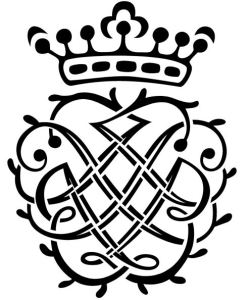Mynstrelles with Straunge Sounds
Clare Wilkinson, Rose Consort of Viols
Delphian DCD34169. 67’20
 Anon: And I were a maiden, De tous biens plaine, Fortuna desperate; Henry VIII: Helas madame, van Ghizeghem De tous biens plaine; Josquin: De tous biens plaine, attrib. Busnoys: Fortune esperée; Josquin: Fortuna desperate; Penalosa: Vita dulcedo / Agnus Dei II; Agricola: Cecus non iudicat de coloribus; Encina: Triste España; Martini: Des biens amors, La martinella; Josquin: In te Domine speravi; Anon: In te Domine sperabo, La quercia, Biblis; Encina: Fata la parte; Anon: La Spagna; Ponce: La mi sola Laureola; Cornysh: Fa la so; Anchieta: Con amores, la mi madre; Isaac: Agnus Dei II, Josquin: Adieu mes amours.
Anon: And I were a maiden, De tous biens plaine, Fortuna desperate; Henry VIII: Helas madame, van Ghizeghem De tous biens plaine; Josquin: De tous biens plaine, attrib. Busnoys: Fortune esperée; Josquin: Fortuna desperate; Penalosa: Vita dulcedo / Agnus Dei II; Agricola: Cecus non iudicat de coloribus; Encina: Triste España; Martini: Des biens amors, La martinella; Josquin: In te Domine speravi; Anon: In te Domine sperabo, La quercia, Biblis; Encina: Fata la parte; Anon: La Spagna; Ponce: La mi sola Laureola; Cornysh: Fa la so; Anchieta: Con amores, la mi madre; Isaac: Agnus Dei II, Josquin: Adieu mes amours.
The Rose Consort is named after an English family of viol makers active around 1600. But for this CD they have gone back 100 years or so to perform on a set of viols based on those depicted on an altarpiece in Bologna dating from 1497, around the time of the very first documentary evidence of a consort of four viols – hence the CDs sub-title of ‘The Earliest consort music for viols’. And it is from Bologna that several of the pieces hail, from the manuscript Bologna Q.18.
The viol consort spread quickly throughout Europe, and seems to have found its way to England by about 1515 when the title quote appears in an account of one of Henry VIII’s courtly revels, referring to “mynstrelles with straunge Sounds as sagbuts, vyolles & outhers”. It could have arrived earlier, possibly via the arrival of Spanish musicians from the court of Catherine of Aragon in 1501. Some of the same Bologna Q.18 pieces are found in the ‘Henry VIII Book’, and pieces from the latter book make up much of the rest of the programme, including one where Henry himself seems to have added a florid contratenor viol part. The CD opens with slightly disturbing ‘I am a maiden’, a courtly song from the English court that describes the protagonist as being a ‘wanton wench’ at the age of 12.
Nearly half the pieces feature the glorious voice of Clare Wilkinson, one of the finest early-music singers around. Her gentle tones have a wonderful sensitivity and blend beautifully with the slightly more edgy tone of the accompanying viols. She sings the opening English song with a gentle period pronunciation, without sounding too yokelish – or, indeed, too much like a 12-year old. She has an exceptional range, her warm mezzo merging imperceptibly into a soprano timbre. She brings an appropriate flavour to songs ranging from the most devoutly devotional to the jovial little ditty about the unfortunate Señor Cotal who murdered his wife after finding her alone with a Spaniard.
The four viol players of the Rose Consort play with a real sense of collaboration and cohesion, whilst ensuring that each instrument is independently clear and focussed, despite the sometimes wide range of pitch. The CD was recorded in the former Great Hall of Forde Abbey in Dorset, later converted into the dining room of the post-dissolution country house. There is an attractive, but appropriately slight, acoustic bloom. It is a relief that the monks of the former Abbey survived the often brutal suppression of the monasteries by the owner of the Henry VIII book.
The 24 tracks flow well, with no judders of key. There are only three obviously sacred texts, one being the complex Agnus Dei from the Missa Ave Maria by Francisco Peñalosa where the vocal line intones the Salve Regina over an accompaniment that includes within its contrapuntal lines the theme from one of the other featured pieces, but played backwards.
One minor gripe (not only of this CDs) is that the otherwise excellent programme note essay on the music does not follow the order of the pieces being performed, a frustration for those who like to read about the music as it is being heard. For a reviewer, this is even more irritating in live concert programmes, where there is only one chance to hear each piece. Also, on this CD, it is not always easy to work out which source the various pieces came from.
